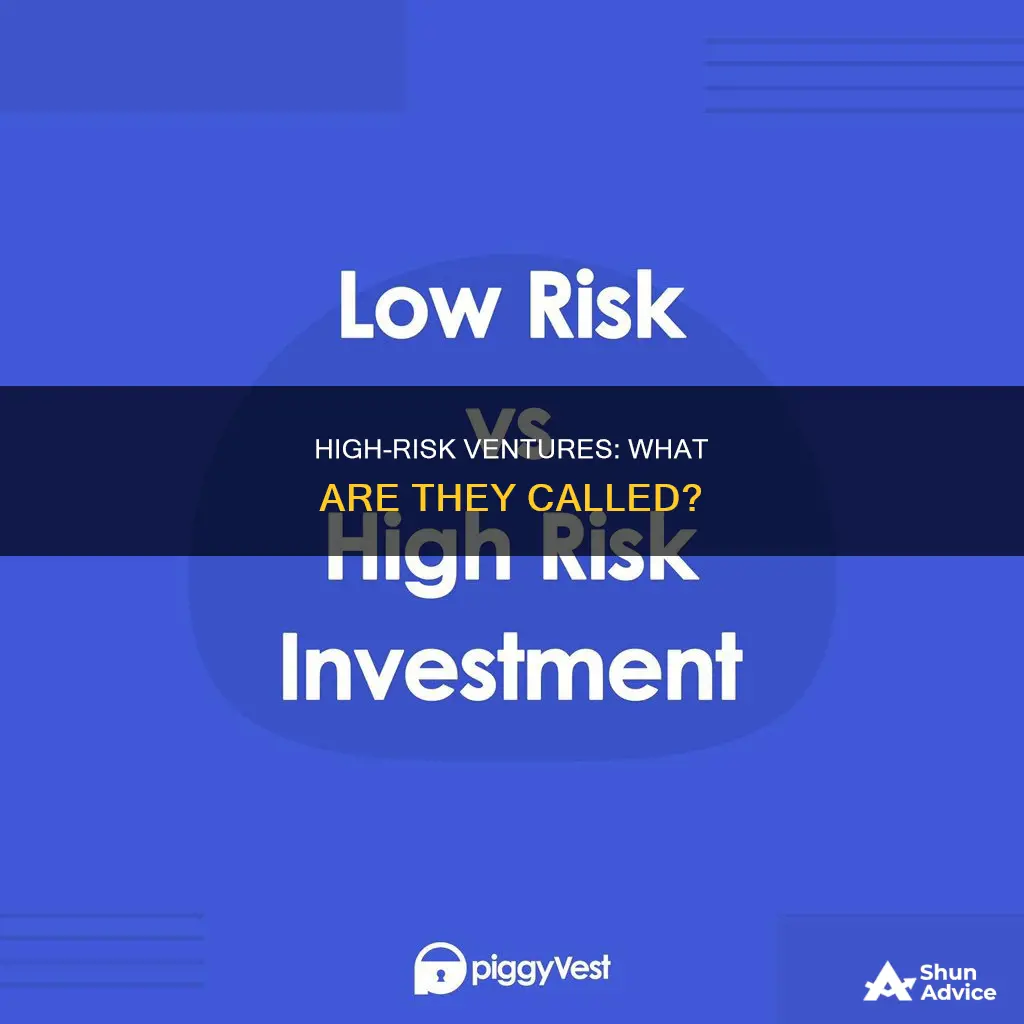
High-risk investments are those that have a large percentage chance of loss of capital, underperformance, or a relatively high chance of a devastating loss. While they offer the prospect of returns that are potentially more attractive than those available from mainstream investments, there is no guarantee that high-risk investments will deliver high returns. In fact, investors could lose some or even all of their money. This makes high-risk investments unsuitable for all but the most experienced investors who fully understand the risks and opportunities involved. Examples of high-risk investments include cryptoassets, mini-bonds, land banking, and contracts for difference.
| Characteristics | Values |
|---|---|
| Name | High-risk investment |
| Examples | Cryptoassets, mini-bonds, land banking, contracts for difference, initial public offerings, venture capital, real estate investment trusts |
| Returns | Potentially more attractive than mainstream investments, but no guarantee of high returns |
| Risk | Large percentage chance of loss of capital or under-performance, or a relatively high chance of a devastating loss |
| Suitability | Only suitable for a minority of consumers, and only those who fully understand the risks and have the finances to absorb losses |
| Volatility | More volatile than lower-risk investments, with values very dependent on market confidence |
What You'll Learn

Cryptoassets
Like other high-risk investments, cryptoassets are subject to significant volatility. This means that their value can fluctuate widely in a short period of time, making them a risky investment. Additionally, the regulatory environment around cryptoassets is still evolving, which adds another layer of risk. While some countries have begun to regulate cryptoassets, the lack of consistent global regulation means that investors may be exposed to additional risks, such as fraud or market manipulation.
Despite the risks, some investors are attracted to cryptoassets because of their potential for high returns. Cryptoassets have seen explosive growth in recent years, with some investors making significant profits. However, it is important to remember that past performance is not indicative of future results, and that cryptoassets remain a highly speculative investment. As such, they are generally only suitable for experienced investors who fully understand the risks involved and have the financial means to absorb potential losses.
Understanding Fair Investment Management Fees: What You Need to Know
You may want to see also

Mini-bonds
High-risk investments are those that offer the prospect of returns that are potentially more attractive than those available from mainstream investments. However, there is no guarantee that high-risk investments will deliver high returns and the actual returns could be below those of mainstream investments. If you choose to invest in high-risk products, you must accept the very real risk of losing some, or even all, of your money. In some cases, you could even end up not only with nothing, but actually owing money.
Overall, mini-bonds can be a high-risk investment option, particularly for retail investors. While they can offer attractive returns, there is a significant risk of losing some or all of the invested capital. It is important for investors to carefully consider the risks and to only invest in mini-bonds if they have the financial capacity to absorb potential losses.
Sugar Baby's Guide to Smart Investing
You may want to see also

Land banking
High-risk investments are suitable for a minority of consumers and are likely to be less actively bought and sold by investors than mainstream products. Some examples of high-risk investments include cryptoassets, mini-bonds, land banking, and contracts for difference.
One of the risks associated with land banking is that the investor may end up paying a considerable amount of money for a small area of low-value land that has a very high risk of remaining undeveloped. Once the general public becomes aware of the lack of viability of the proposed plot investment scheme, the real value of the individual plots collapses. This is typically followed by the land plot company liquidating completely or relocating to another legal jurisdiction.
Another risk to consider when investing in land banking is the potential for fluctuating market trends. By carefully considering these factors, investors can enhance the possibilities of safe investments and establish a strong position in their investment portfolio. Additionally, there are challenges such as property taxes, eminent domain, zoning regulations, environmental laws, and restrictions on land usage that can impact the value of the land.
Overall, while land banking can offer potential benefits, it is important to carefully consider the risks involved and ensure that it aligns with your investment goals and risk tolerance.
Equity Investment Examples: Understanding Your Portfolio Better
You may want to see also

Contracts for Difference (CFDs)
CFDs are a type of derivatives trade. They allow traders and investors to profit from price movement without owning the underlying assets. The CFD does not consider the asset's underlying value, only the price change between the trade entry and exit. CFDs are increasingly popular in over-the-counter exchanges around the world, but they are not permitted in the U.S.
Because the industry is not regulated and there are significant risks involved, CFDs are banned in the U.S. by the Securities and Exchange Commission (SEC). CFDs are a type of reverse auction intended to give investors the confidence and certainty they need to invest in low-carbon electricity generation. They work by fixing the prices received by low-carbon generation, reducing the risks they face, and ensuring that eligible technology receives a price for generated power that supports investment.
Japan's Investment in India: Strategic Economic Alliance
You may want to see also

Initial public offerings
IPOs are the first time a private company sells shares of its stock to the public on a stock exchange. This is also known as 'going public' and means that the company has transitioned from private to public ownership. IPOs are underwritten by one or more investment banks, who also arrange for the shares to be listed on one or more stock exchanges.
IPOs can be used to raise new equity capital for companies, to monetise the investments of private shareholders such as company founders or private equity investors, and to enable easy trading of existing holdings or future capital raising by becoming publicly traded. They can also be used to help fund new growth or pay off debt.
IPOs are a high-risk investment because there is a chance of losing some, or even all, of your money. In some cases, you could even end up not only with nothing but actually owing money. This makes IPOs unsuitable for all but the most experienced investors who fully understand the risks, as well as the opportunities, that they involve and those who have the finances to absorb losses.
Investors' Strategies for Turning a Profit: Secrets Revealed
You may want to see also
Frequently asked questions
A potentially high-risk investment is called a high-risk investment.
Examples of high-risk investments include cryptoassets, mini-bonds, land banking, and contracts for difference (CFDs).
High-risk investments are suitable for a minority of consumers, typically only the most experienced investors who fully understand the risks and have the finances to absorb losses.







